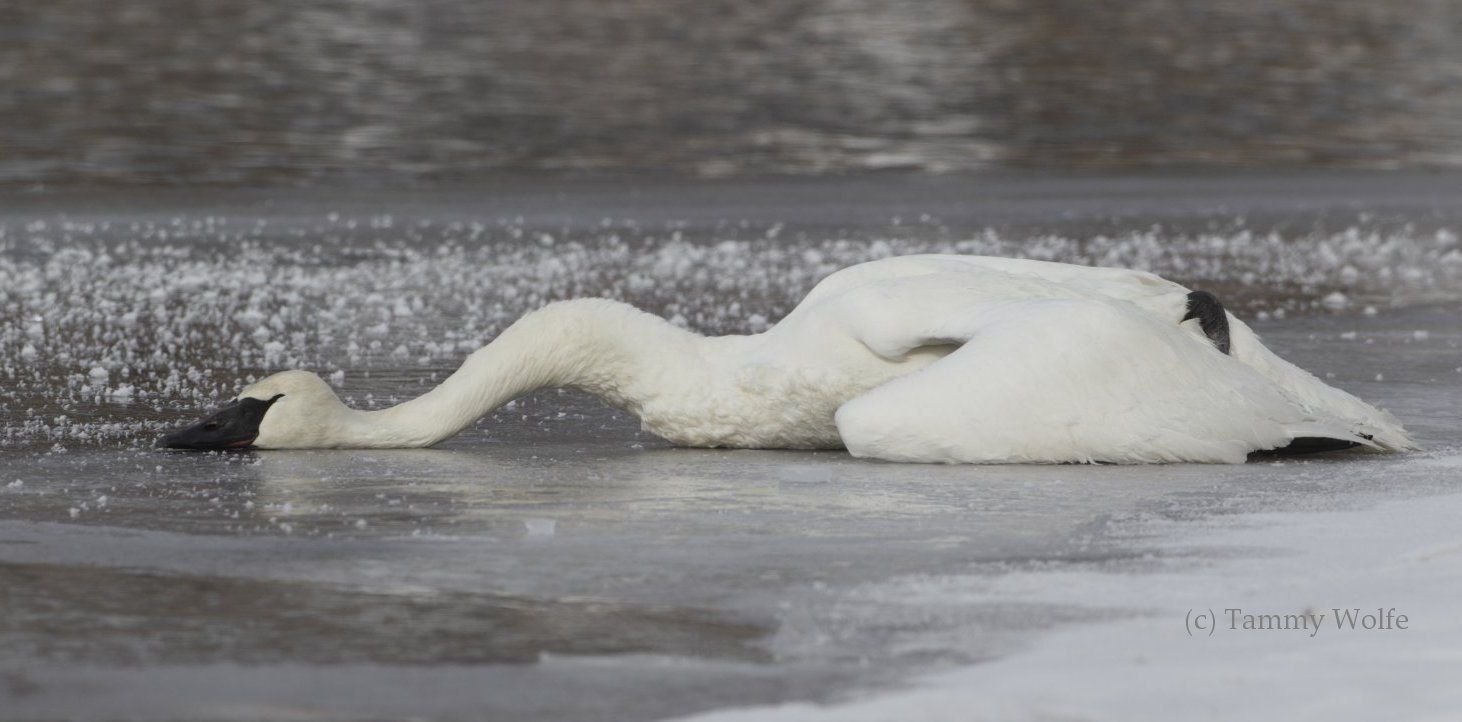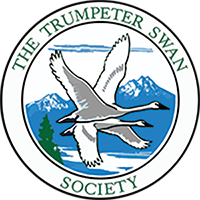Photograph by Tammy Wolfe
Top 10 Threats to Trumpeter Swans

Photograph by Tammy Wolfe. Lead-poisoned swan.
As Trumpeters return to long-vacant habitats, they often encounter conditions dramatically altered by human activities. They are often particularly vulnerable while they are learning to use a new area. Learn more about the threats they face and what can be done to protect and help them.
Some of the threats they now face include:
-
Did you know a single split shot or lead sinker, or 3 lead pellets can kill a 30 pound swan over a two-three week period? Swans swallow lead fishing tackle or lead pellets in shallow waters where they feed, or lead pellets found in soil where shooting activities have occurred. Watch the YouTube video of a lead poisoned swan cygnet shortly before rescue.
-
Powerline collisions injure or kill swans. Powerlines near nesting and wintering wetlands and waters, or across migration routes are serious health hazards. Powerline "diverters" can help reduce collisions.
-
Changing hydrology, non-point pollution through runoff, invasive species, and regulations affecting wetlands can significantly impact nesting habitat availability and security. You can help. Read how your support helps habitat improvement (Restoration and Management), and sign up for Enews to get the latest information about swan issues in your region.
-
Loss of farm lands where crop residues have been providing important winter food resources, especially in the Pacific Northwest.
-
You can help. If you see Trumpeter Swans in areas new to you, report them to our Trumpeter Watch citizen science program.
-
Illegal shooting
-
Changing climate is reducing breeding habitat quality especially in the relatively arid western US. The arctic is also experiencing habitat suitability changes as permafrost melts and warmer winters and earlier springs affect food availability and timing.
-
New diseases, such as avian influenza, with potentially devastating consequences
-
Human disturbance can disrupt nesting attempts or flush wintering swans, unnecessarily burning needed energy reserves. Swans may abandon nests because of human disturbance. This is especially detrimental in the United States Rocky Mountain Population.
-
Lack of funding for long-term habitat protection

